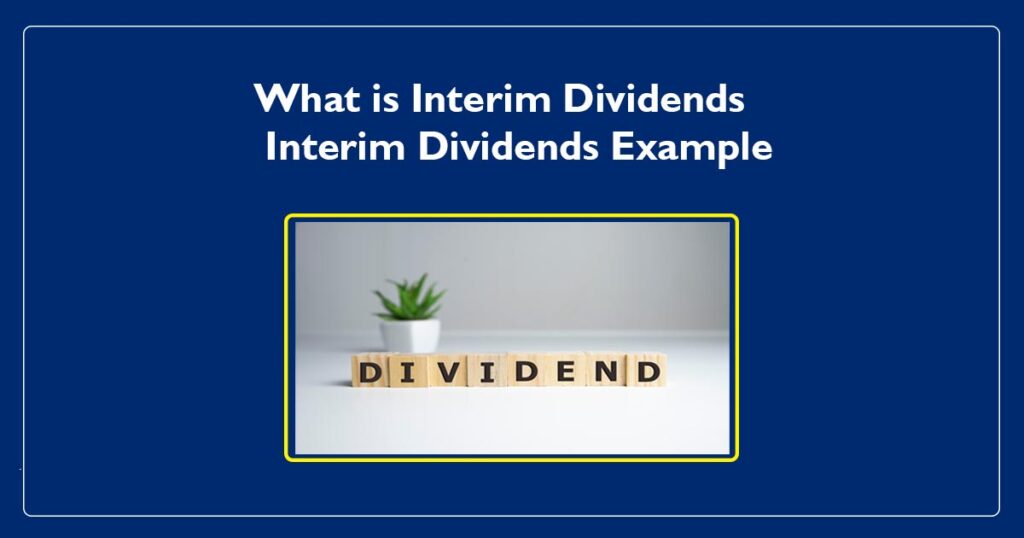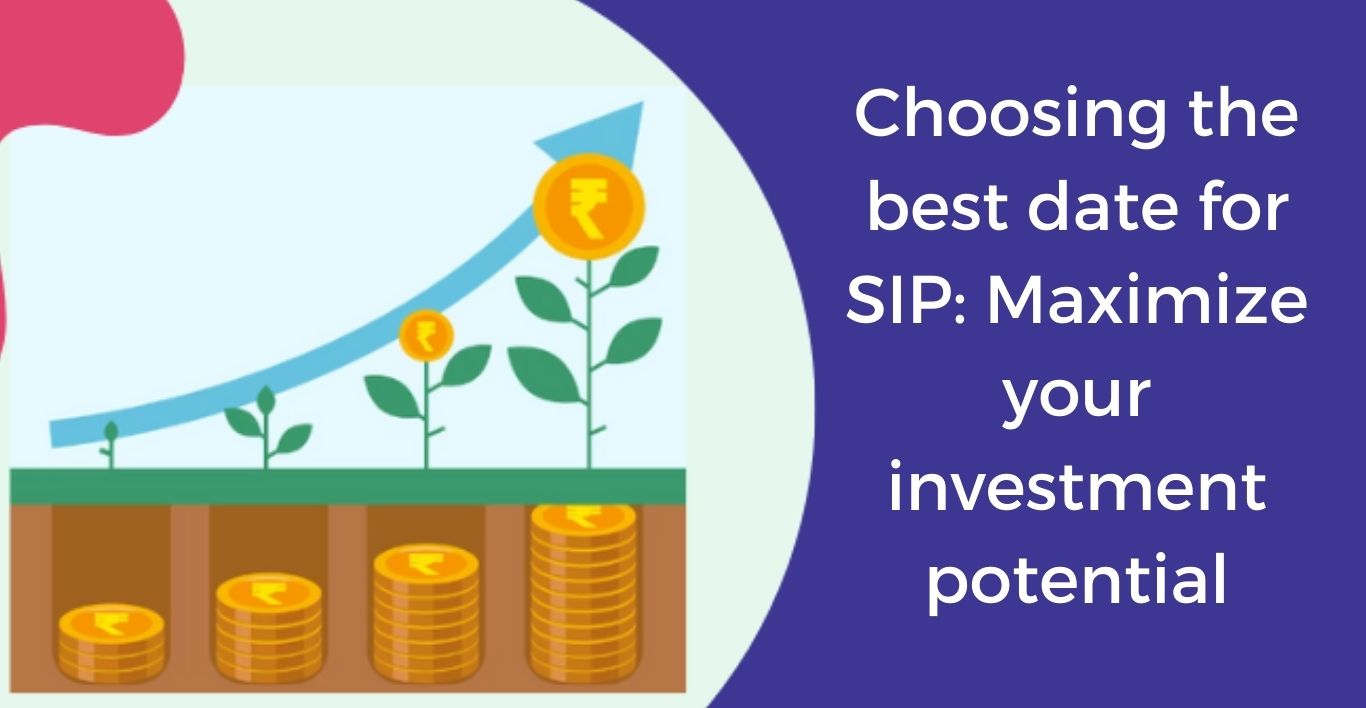Introduction
Retained earnings, which are the company’s profits from prior fiscal years, are used to fund the interim dividends. Before the interim dividend is declared, gains from the current year are frequently not distributed. The payment of an interim dividend by a firm indicates whether or not its full-year performance will meet market expectations.

Interim dividends might be beneficial for investors who require capital but wish to keep their high-dividend stocks. Despite covering half or less of an average annual distribution, interim dividends can still fill any gaps before regular payments begin by providing some cash. The definition of an interim dividend is discussed in this article.
What is interim dividend?
Many investors take either a growth investing approach or a dividend investing approach when it comes to stock market investments. In order to receive a consistent stream of income through dividends, proponents of the dividend investing strategy invest in a stable and profitable firm that has been around for a while.
It is crucial that you understand the meaning of an interim dividend and the distinction between an interim dividend and a final dividend if you’re an investor intending to use this strategy.
Read More : 6 SBI Mutual Funds with Negative Return – do you have any?
What is the meaning of an interim dividend?
We’ll discuss the interim dividend now that you’re familiar with the terms dividend and final dividend.
A corporation that pays interim dividends does so prior to holding its annual general meeting (AGM). Before the final financial accounts are prepared, interim dividends are suggested and given to the company’s shareholders.
These intermediate dividends may be paid more than once and at any time during the fiscal year, in contrast to final dividends, which are only paid out once. The majority of corporations typically choose to announce and distribute these dividends either quarterly or semi-annually, together with the publication of the aforementioned companies’ respective quarterly or semi-annual financial statements.
Calculation of the interim dividend
The interim dividend and final dividend are declared by the board of directors. The interim dividend will be lower than the final payout if they both come out in the same fiscal year.
The Board of Directors can reduce the interim dividend if the annual results are below expectations in order to maintain the company’s financial stability.
An interim dividend example
Now that we have a better understanding of this idea, let’s look at an example of an interim dividend.
On November 5, 2021, The National Aluminium Company Limited, also known as NALCO, announced a dividend shortly after the release of the company’s second quarter (July–September) and semi-annual financial results. The company’s board of directors approved the dividend payout at a rate of 10% of the face value (Rs. 5) of the company’s shares, or Rs. 0.50 per equity share, during their meeting.
The business also established December 1, 2021, as the record date for the dividend distribution. This essentially means that the only shareholders who would be eligible to receive this dividend as of December 1, 2021, would be the equity shareholders of the corporation.
Since the National Aluminium Company Limited declared a dividend in the middle of the fiscal year, prior to the creation of the final financial statements and the company’s annual general meeting, the circumstance unquestionably qualifies as an example of an interim dividend.
Read More: HDFC Debt Mutual Fund: Invest for Regular Income and Capital Appreciation
Funding of the dividend:
The company typically uses its current year’s net profit generated by the company to fund the dividend payout because the final dividend is declared after the preparation and audit of the final financial statements.
When are dividends paid out to the shareholders?
Typically, an annual general meeting of shareholders is held by a firm once a year (AGMs). The business gives its equity owners the audited financial statements for the previous fiscal year. In addition, the business asks the shareholders to approve a dividend rate that would be paid out to the shareholders.
The company pays the dividends to its equity shareholders upon receipt of their approval for the payment of the dividends. What is typically referred to as the final dividend is the payout that the firm proposes at the AGM following the preparation and audit of the final financial statements.
Declaration and approval of the dividend:
The Board of Directors of the Company does not determine the ultimate dividend; it only proposes it. The company’s shareholders are the ones who analyse the problem, cast votes on it, and ultimately agree to the distribution of the final dividend.
The company’s board of directors, on the other hand, makes the announcement, casts the deciding vote, and approves the payment of interim dividends. Yet, the company’s shareholders do have the authority to reverse the board of directors’ choice and prevent the payment of the interim dividend.
Why is the interim dividend different from the final dividend?
The distinctions between the interim dividend and the final dividend go beyond the date of the company’s declaration. Here are a few more significant distinctions between the two:
Final versus interim dividends
The returns a shareholder receives annually or twice a year include dividends. This is an example to demonstrate how an interim dividend functions.
Let’s say you own 100 Company L shares. You are entitled to get 1 Rupee per share. You will therefore receive Rs. 100 as a dividend at the end of the year. By the end of the year, you could gain Rs. 300 if dividends rise and the company announces that shareholders would get the first payout three times.
Final payouts are only declared once a year or twice every six months. They are disclosed simultaneously with the financial year’s earnings. Current earnings fund the final dividend. The interim dividend, on the other hand, is a portion of retained earnings or interim earnings that are not current. They are given out when a business has achieved significant earnings and wants to share them with its shareholders.
The fixed dividend, which is paid out each year, is the final payout. It may be revealed every quarter, every two years, or even every year. The dividend is paid from recent profits. It might be the surplus earnings after working capital and capital expenditures are deducted.
The management of the company and its intentions towards the shareholders are entirely responsible for the strategy behind interim or final dividends.
Conclusion
Now that you are familiar with the definition of an interim dividend and all the other information related to the idea, you should take note of this. A corporation almost always pays a final dividend in addition to any interim payments.
The rate of the final dividend is typically lower when a company pays both interim and final dividends as opposed to a company that only pays a final dividend.






